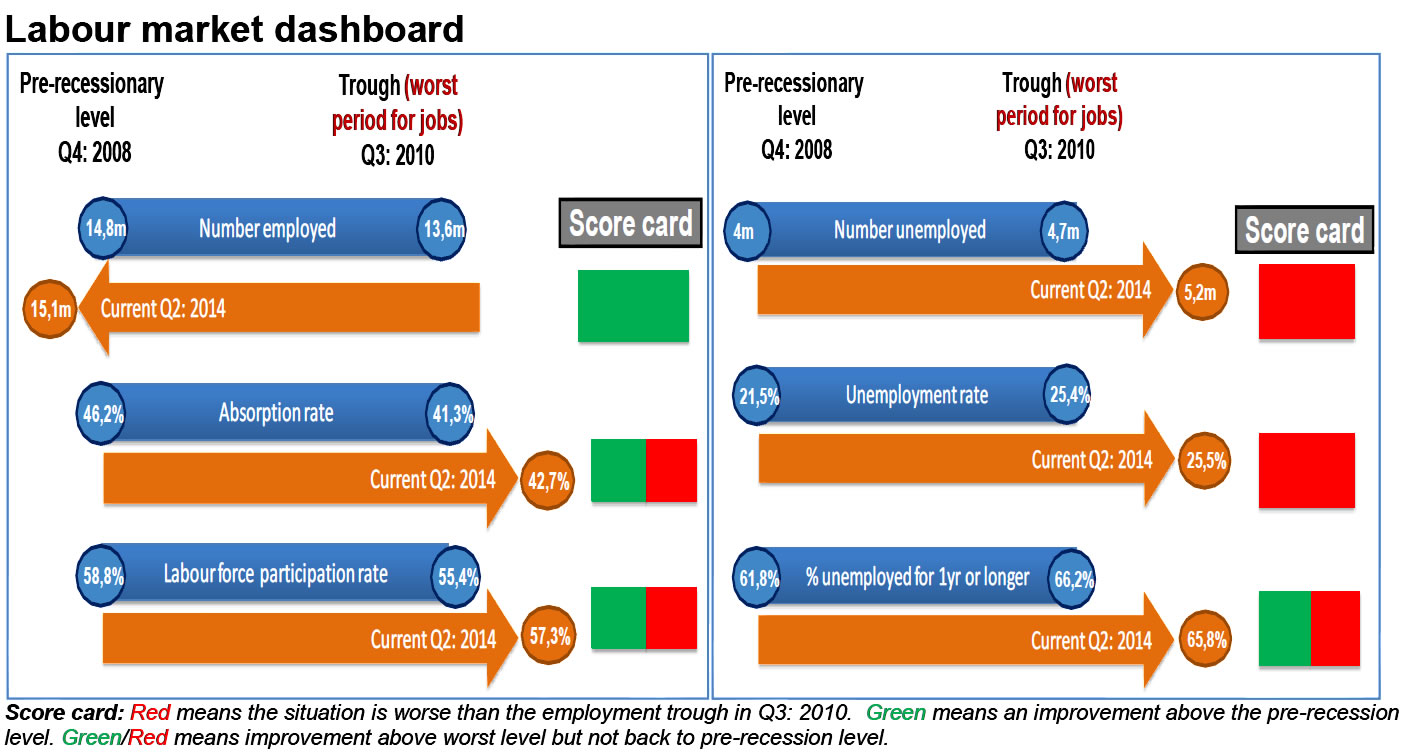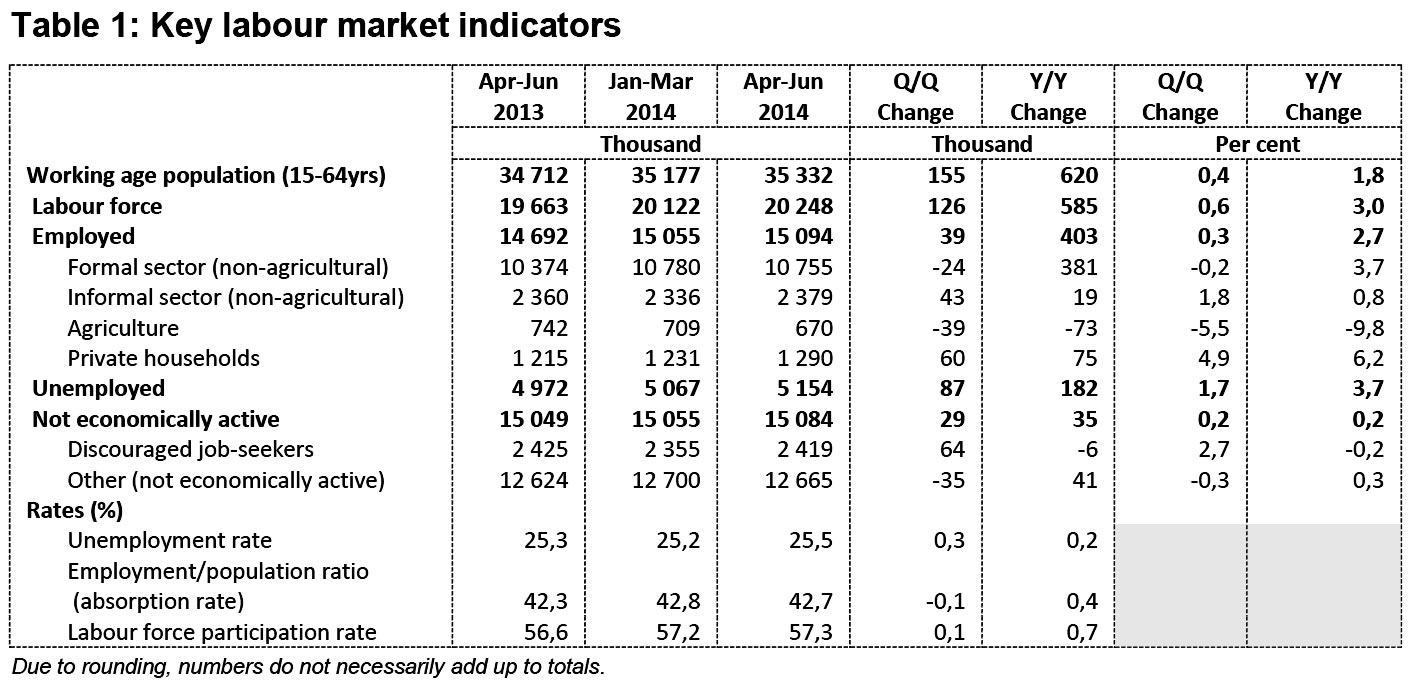Quarterly Labour Force Survey: Quarter 2 (April to June), 2014 Press Statement
29 July 2014
Employment increased by 39 000 between Q1: 2014 and Q2: 2014, while unemployment increased by 87 000 resulting in an increase of 126 000 persons in the labour force. Consequently, the unemployment rate increased by 0,3 of a percentage point to 25,5% in Q2: 2014. The expanded unemployment rate reached 35,6% in Q2: 2014, increasing by 0,5 of a percentage point between the first and second quarter of 2014.
The labour market dashboard shows at a glance the current labour market situation relative to conditions before the recession occurred in 2008 and at the worst employment level during the recession in Q3:2010. Employment outcomes are mixed, while jobs have been created in the post-recession period, this has not resulted in an increase in the absorption rate to the levels witnessed before the recession. And the labour force participation rate remains below the pre-recession level because discouragement has increased. The increase in the number of unemployed has resulted in an increase in the unemployment rate above pre-recessionary levels. And the percentage of those in long-term unemployment is higher than before the recession but lower than during the employment trough.
The dashboard and Table 1 show that the absorption rate declined by 0,1 of a percentage point quarter-on-quarter and at 42,7% is still 3,5 percentage points below the peak of 46,2% achieved in Q4: 2008. The labour force participation rate increased by 0,1 of a percentage point on a quarterly basis to 57,3% in Q2: 2014 and declined by 1,5 percentage points since the employment peak in Q4: 2008.
Table 1 shows that employment in the formal sector declined on a quarterly basis by 24 000 while job gains in the informal sector totalled 43 000.
Since the decline in employment to its lowest level in Q3: 2010 (13,6 million) 1,4 million jobs have been created of which 1,3 million were in the formal sector.
The expansion in employment between Q1:2014 and Q2:2014 was driven mainly by an increase in Community and social services (103 000), Private households (60 000) and Transport (52 000). The industries which shed jobs between the two quarters included Manufacturing (60 000), Agriculture (39 000) and Finance (34 000).
A year-on-year increase of 585 000 in the labour force was the result of an increase in both employment and unemployment by 403 000 and 182 000 respectively.
The largest contributors to the year-on-year increase in employment were; Community and social services (265 000), Trade (92 000), Private households (75 000) and Transport (50 000).
Download publication here
For media enquiries contact:
Ms Kefiloe Masiteng
Deputy Director General: Population and Social Statistics, on (012) 310 2109
For technical enquiries contact:
Mr Peter Buwembo
Executive Manager: Labour Statistics, on (012) 310 8655



